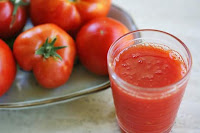Sun-Burn Free Tanning Bed Tan, But 4x Increased Cancer Risk Even W/Out A Single Sunburn! Plus: Carotene + X Cocktail Protects and Tans You From the Inside Out!
 |
| Even if you don't get burned tanning beds pose a risk factor! |
If we put some faith into the results of a recent study from the Department of Dermatology at the University of Minnesota this is a fatal error. "Toasting" yourselves on a tanning bed increases your risk of developing skin cancer by 287%! Or, if you like that better, it almost quadruples (4x) it!
The results Rachel Isaksson Vogel and her colleagues from the University of New Mexico Cancer Center and the Brown University present in their latest paper in the Journal of the National Cancer Institute (JNCI) will probably be quite shocking for some of you who relied on the ability of the UV-filters in tanning beds to reduce the increase in cancer risk (Vogel. 2014).
There are better ways to get your vitamin D than tanning beds, learn more the SuppVersity
- What else can protect you? Peer reviewed evidence for skin cancer protective effects exist from:sex, age at reference date (in years),
- milk thistle (Katiyar. 2005)
- melatonin (Janjetovic, 2014)
- calcium (1g) + 400IU vitamin D3 (-37% in women with increased risk; Tang. 2011)
- retinol (25,000IU/day; cf. Moon. 1997)
- retinol and zinc
+ riboflavin and niacin + vitamin C and molybdenum (at 1-2x the RDA; cf. Blot. 1993)
- eye color (gray/blue, green, hazel, or brown),
- hair color (red, blond, light brown, or dark brown/black),
- skin color (very fair, fair, light olive, vs dark olive, brown, very dark brown, or black),
- freckles (none, very few, few, some/many),
- moles (none, very few, few, some/many),
- income (≤$60,000, >$60,000, missing),
- education (completed college, did not complete college),
- family history of melanoma (yes, no, missing),
- lifetime routine sun exposure (continuous),
- lifetime sun exposure from outdoor activities (continuous),
- lifetime sun exposure from outdoor jobs (continuous), and
- lifetime sunscreen use (continuous)
Now you want a supplemental alternative / adjunct, right?
Against that background the promised "supplemental tanning formula" which consists of pretty ordinary supplements, you can find on the shelves of every larger Internet-retailer will probably become even more interesting, right?
 |
| Table 1: Tanning of different body regions before and after treatment with the supplement combo () |
 |
| You want to kill two birds with one stone? Try "Tomatorade(R)" and get your daily tanning (Postaire. 1997) and cancer protective (Aust. 2005) dose of lycopene right from nature. |
- Aust, Olivier, et al. "Supplementation with tomato-based products increases lycopene, phytofluene, and phytoene levels in human serum and protects against UV-light-induced erythema." International journal for vitamin and nutrition research 75.1 (2005): 54-60.
- Blot, William J., et al. "Nutrition intervention trials in Linxian, China: supplementation with specific vitamin/mineral combinations, cancer incidence, and disease-specific mortality in the general population." Journal of the National Cancer Institute 85.18 (1993): 1483-1491.
- Green, Adèle, et al. "Daily sunscreen application and betacarotene supplementation in prevention of basal-cell and squamous-cell carcinomas of the skin: a randomised controlled trial." The Lancet 354.9180 (1999): 723-729.
- Hercberg, Serge, et al. "Antioxidant supplementation increases the risk of skin cancers in women but not in men." The Journal of nutrition 137.9 (2007): 2098-2105.
- Janjetovic et al. "Melatonin and its metabolites ameliorate UVB-induced damages in human epidermal keratinocytes." Journal of pineal research (2014). Ahead of print.
- Katiyar, Santosh K. "Silymarin and skin cancer prevention: anti-inflammatory, antioxidant and immunomodulatory effects (Review)." International journal of oncology 26.1 (2005): 169-176.
- Lappe, Joan M., et al. "Vitamin D and calcium supplementation reduces cancer risk: results of a randomized trial." The American journal of clinical nutrition 85.6 (2007): 1586-1591.
- Moon, Thomas E., et al. "Effect of retinol in preventing squamous cell skin cancer in moderate-risk subjects: a randomized, double-blind, controlled trial. Southwest Skin Cancer Prevention Study Group." Cancer Epidemiology Biomarkers & Prevention 6.11 (1997): 949-956.
- Postaire, Eric, et al. "Evidence for antioxidant nutrients‐induced pigmentation in skin: Results of a clinical trial." IUBMB Life 42.5 (1997): 1023-1033.
- Tang, Jean Y., et al. "Calcium plus vitamin D supplementation and the risk of nonmelanoma and melanoma skin cancer: post hoc analyses of the women's health initiative randomized controlled trial." Journal of Clinical Oncology 29.22 (2011): 3078-3084.
- Vogel, et al. "Exposure to Indoor Tanning Without Burning and Melanoma Risk by Sunburn History." JNCI J Natl Cancer Inst (2014) 106(7): dju112 doi:10.1093/jnci/dju112









